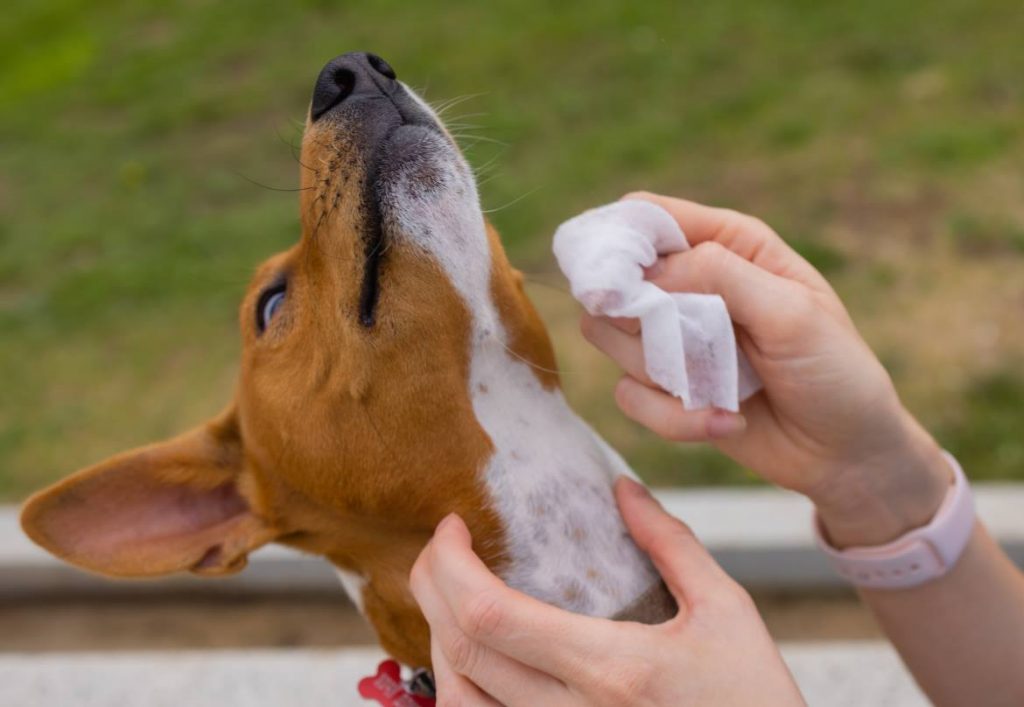
If the thought of ticks gives you the creeps, don't worry; you're not alone. If your furry friend loves the great outdoors or if you reside in a heavily wooded region, ticks might be hard to avoid. This article offers you some helpful tips to keep these pesky critters at bay and protect both yourself and your pet.
As a part of the arachnid family, ticks resemble spiders with their eight legs. Before feeding, ticks are typically small, about the size of a pinhead. However, once they latch onto an animal (known as their host) and fill themselves with blood, they can grow up to a centimeter in size. Additionally, ticks undergo a color change, making them more difficult to identify.
Ticks tend to inhabit areas with long grass and woodlands, especially in humid climates. They patiently wait for animals and humans to pass by, seizing the opportunity to attach themselves. Once attached, they begin feeding by sinking their strong teeth into the flesh of the host and consuming their blood until they are satiated.
These unpleasant parasites can pose a threat to both pets and humans in your household. Ticks have the ability to transmit diseases, including bacterial infections like Lyme disease and Mycoplasma. It is crucial to regularly groom and check your pet's fur, especially if you do not use any regular tick control methods.
After a tick attaches to your pet's skin, it can be difficult to spot due to its fur. However, you are more likely to feel it before you see it. Take the time to run your hands over your pet's body and feel for any tiny bumps. Pay close attention to areas like the head, neck, ears, armpits, and feet, especially if your pet is hairless or has bald spots.
Don't forget to check your pet’s ears, too. You can closely check the inside of your pet's ear with a torch. If you notice a tick, consulting your vet is a wiser option than trying to remove it on your own. Daily hand-searching of your pet can help you catch ticks before they cause any illness. Plus, your furry friend will enjoy the extra attention and think they're getting a pleasant massage.
One of the challenges with ticks is that pets often don't show any symptoms while the tick is feeding. However, some pets may have a reaction to tick bites, which can include swelling, red skin, and infection at the bite site. If your pet scratches the tick off, it may leave the mouth parts behind.
Lyme disease is a serious concern for pets, as it can cause severe symptoms. This infection is transmitted by infected ticks. Even if your pet seems healthy immediately after being bitten, it can still become very ill later on. If your pet displays symptoms such as fever, loss of appetite, lethargy, or swollen lymph nodes, it's important to consult your vet right away.
To get rid of the tick quickly, you can either use fine-tipped forceps or a special tick "hook" that you can buy from some vets. If you don't have either of those tools, it's better to use a pair of fine scissors instead of eyebrow tweezers. Remember to always wear gloves when handling ticks to avoid touching your skin.
Start by grabbing the tick as close to your dog's skin as possible, making sure not to pinch your pet. Then, pull it out in a straight motion slowly and steadily. Avoid jerking it, as any leftover parts could cause an infection. After removing the tick, wash your hands and clean your pet's wound with antiseptic.
Pay further attention to the area on your pet’s body where the tick was to check for any signs of infection. If the irritation or infection doesn’t get better, make an appointment with your vet. Also, watch out for any symptoms of a tick-borne illness.
Make sure to regularly check your pet for ticks, even if they are on flea and tick preventative. This is especially important during the tick season, which includes spring, summer, and fall. Remember, removing ticks is crucial for your pet's well-being.